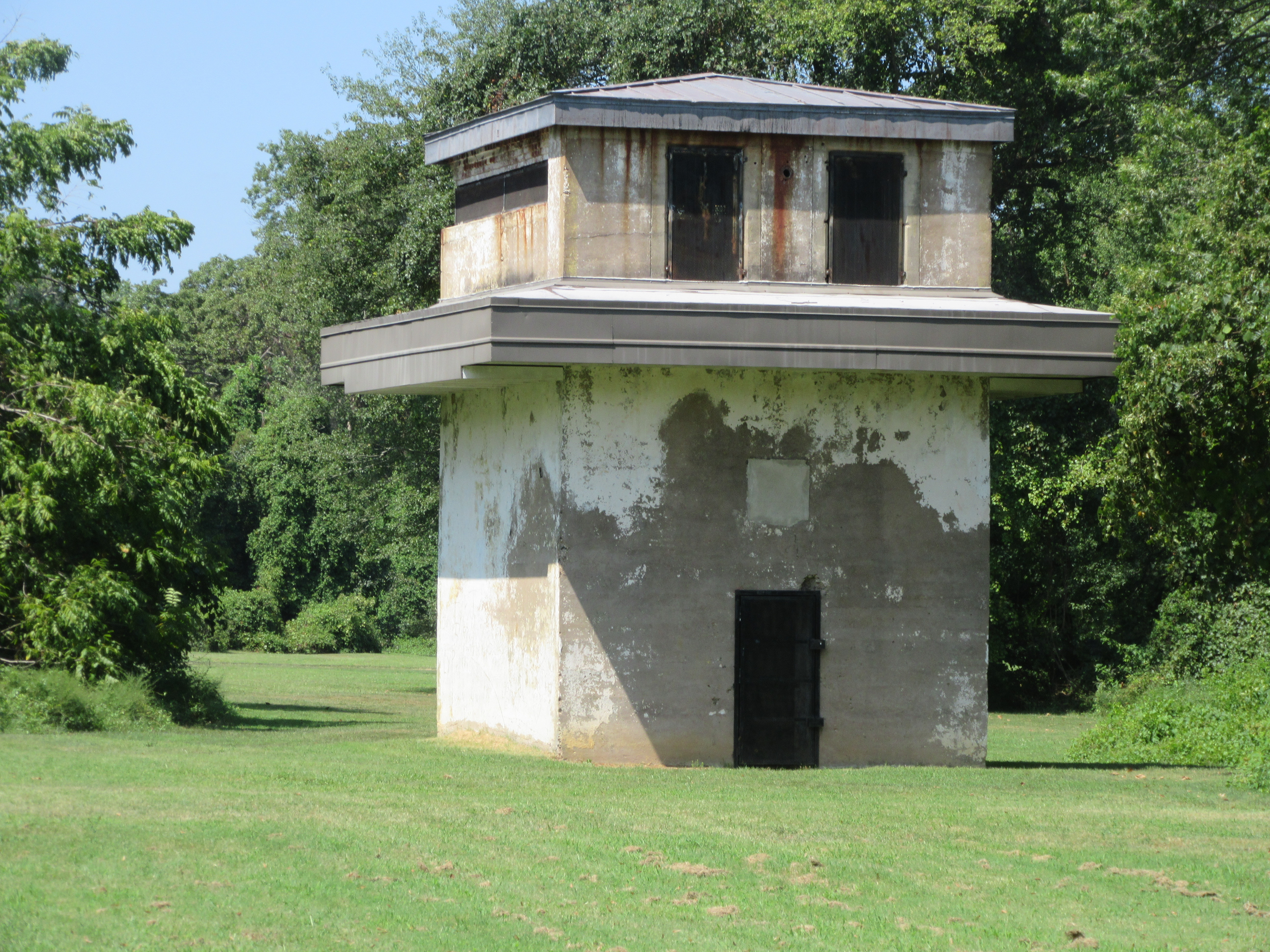Thursday, July 17, 2025
The tranquility at Fort Hunt Park today offers no hint at the clandestine goings-on there during World War II. Today’s park-goers no doubt have a more pleasant time than the 4,500 German, Japanese and Italian prisoners of war (POWs) who were interrogated there in a top-secret camp from 1942 to 1946.
On July 26 at 1 p.m. the National Park Service will host an online program in partnership with the Martha
 The Battery Commander's Tower is still standing from 1902.
The Battery Commander's Tower is still standing from 1902.
Register at https://librarycalendar.fairfaxcounty.gov/event/14294542.
P.O. Box 1142
Few knew about the secret outpost with the code name, P.O. Box 1142, where many prisoners were Nazi naval officers and German scientists, often interrogated by Jewish immigrants fluent in German who had fled the Holocaust.
One tactic for extracting information was to blindfold the POWs and drive them around and around monotonously on the circular road still there in a windowless bus and then take them to an underground room for questions.
Here, Army and Navy officials quizzed high-value Nazi leaders like rocket scientist Wernher von Braun and Reinhard Gehlen, head of Nazi intelligence on the Eastern Front. Almost 800 had survived sunken German U-Boats that terrorized the Atlantic Coast. “If a prisoner appeared to possess significant information, he was earmarked for shipment to Fort Hunt,” wrote Matthew Laird in “By the River Potomac.”
The interrogators tried to tease out tidbits of intelligence, from officers’ names to jet engine technology, especially eager to learn about the Germans’ rocket and submarine technology. They threatened some reluctant POWs with a feared “Russian officer,” who would suddenly appear in full military uniform. Some interrogators used enticements like games, candy and bubblegum. The ventilation systems of most cells hid listening devices for eavesdropping on conversations.
Camp Facilities
The covert camp had two wood-frame-and-concrete enclosures. Today’s grassy fields, a few woodsy areas and picnic pavilions long ago replaced the perimeter barbed wire fence and most of the buildings of the war era, but a few remnants remain, like four chunks of cement which were bases of former guard towers.
The big open grassy expanse in the middle of the park today was the parade field. Two clearly aligned rows of trees, planted in the 1930s by the Civilian Conservation Corps, mark the old service road that went through the camp.
After the war, officials ordered the destruction of most of the complex’s facilities and documents. In the 1990s, when the government declassified some World War II records, camp information emerged and the Park Service conducted oral histories with some associated with the camp.
More Secret Stuff a Bit South
A wooded site 25 miles south of Fort Hunt, today’s Prince William Forest Park, was a spy training ground from 1942 to 1945 run by the Office of Strategic Services (OSS), the forerunner of the Central Intelligence Agency.
Then called Chopawamsic Recreational Demonstration Area, recruits had paramilitary training and learned fieldcraft, weaponry, demolition, undercover procedures, field security and close combat.
Today’s visitors can see some of their cabins, the infirmary, storage structures, a water tower and a few gun mounts, most built in the mid-1930s by Civilian Conservation Corps men as camp facilities for inner-city children to experience nature. The park’s museum collection has some artifacts representing OSS’s hush-hush activities.
Other Chapters of Fort Hunt’s History
Native Americans hunted and fished in the Fort Hunt area from 6,000 B.C. to the mid-1700s. Captain John Smith encountered the Conoy tribe here in 1608. George Washington established a “slave village” on the property.
In 1931, an African-American Reserve Officers’ Training Corps (ROTC) headed by white officers trained at Fort Hunt. In 1933 and 1934, World War I veterans protesting in the Bonus Marches demanding war pensions camped there.
Two years before Japan’s 1941 attack on Pearl Harbor, Fort Hunt had a secret radio monitoring station to intercept and decode radio traffic from Mexico, Japan, Germany and Italy.
Four concrete gun batteries built in the 1890s mystify many today. Intended for the Spanish American War, the batteries have a semicircular top so guns could swing around. Shells could weigh several hundred pounds and were raised from below on elevators.
The Battery Commander’s Tower today looks much as it did when completed in 1902. Built for the nation’s coastal defense system with concrete walls over two feet thick, from the top the commander could see down the Potomac River and coordinate the firing from the batteries.
The white frame house at the park’s entrance was built in 1905 for non-commissioned officers and shared by two families.
A pin oak today commemorates the 1939 visit of England’s King George VI and Queen Elizabeth.
Both parks are managed by the National Park Service.
More information: Fort Hunt Park, http://www.nps.gov/gwmp/fort-hunt.htm; Prince William Forest Park, www.nps.gov/prwi.